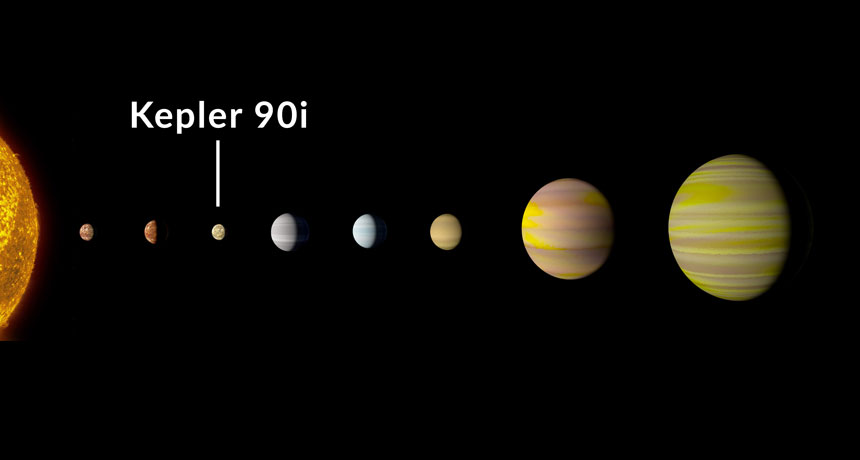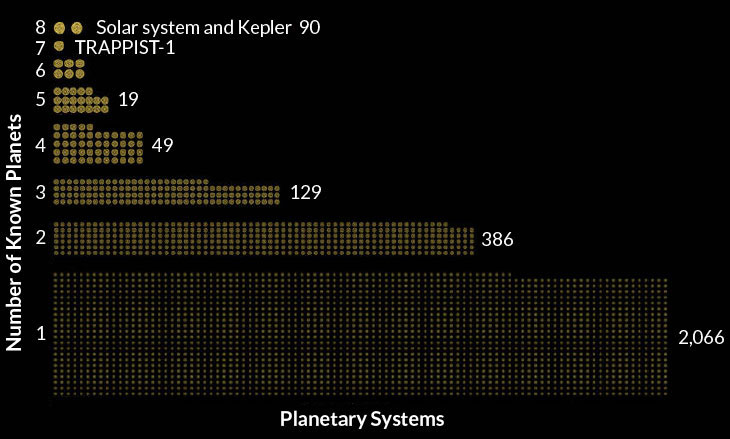
Our solar system is no longer the sole record-holder for most known planets circling a star.
An artificial intelligence algorithm sifted through data from the planet-hunting Kepler space telescope and discovered a previously overlooked planet orbiting Kepler 90 — making it the first star besides the sun known to host eight planets. This finding, announced in a NASA teleconference December 14, shows that the kinds of clever computer codes used to translate text and recognize voices can also help discover strange new worlds.
The discovery, also reported in a paper accepted to the Astronomical Journal, can also help astronomers better understand the planetary population of our galaxy. “Finding systems like this that have lots of planets is a really neat way to test theories of planet formation and evolution,” says Jeff Coughlin, an astronomer at the SETI Institute in Mountain View, Calif., and NASA’s Ames Research Center in Moffett Field, Calif.
Kepler 90 is a sunlike star about 2,500 light-years from Earth in the constellation Draco. The latest addition to Kepler 90’s planetary family is a rocky planet about 30 percent larger than Earth called Kepler 90i. It, too, is the third planet from its sun — but with an estimated surface temperature higher than 400° Celsius, it’s probably not habitable.
Story continues below graphic

MOVIN’ ON UP
The seven previously known planets in this system range from small, rocky worlds like Kepler 90i to gas giants, which are all packed closer to…
The post AI has found an 8-planet system like ours in Kepler data appeared first on FeedBox.